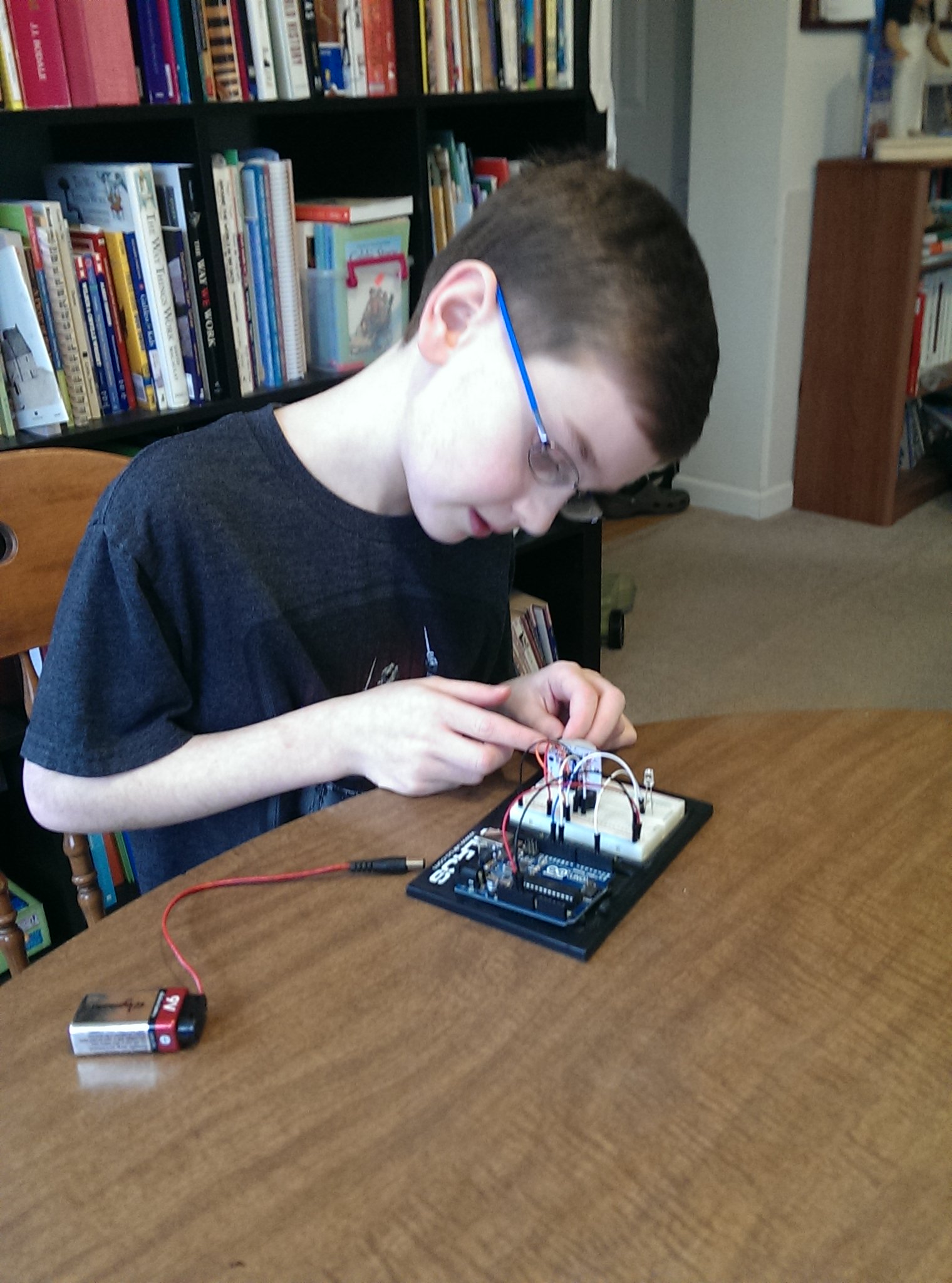Four Easy Ways to Implement Technology in Your Homeschool
- April 5, 2016
- By Heather Woodie
Sometimes “implementing technology” can seem like a big task when working with our kids at home. We think we don’t have the expertise or funds to make it happen, but the truth is we have many tools within our grasp. Let’s take a look at four ways to incorporate technology.
Video– This may seem like an obvious option, but it’s worth revisiting over and over since there’s new content online everyday. My kids recently began watching videos on primitive technology from a maker site and they’ve since spent hours in the afternoons building shelters and making drills with materials found in the woods behind our home.

With video in your homeschool you can:
- Watch tutorials any topic including math, science, and tech.
- Make a playlist for videos in YouTube.
- Subscribe to popular “vloggers” who offer regular videos on subject within their expertise.
- Watch tutorial sites with courses in many technology related fields.
- Tune into TED Talks and free college courses that interest your students.
Tablets– Has your family entered the world of tablets yet? There are many options now that fit any budget. The benefits of a tablet are many:
- Apps for practice- Educational apps offer an opportunity for extra practice and the more portable they are, the more they get used. One of the best things about homeschooling is the ability to be flexible about where learning happens.
- Reading books- While I know some prefer reading on paper, my kids love to take all of their favorite books with them on a tablet.
- Listening to Audio- Have podcasts cued up that align to what you’re studying.
- Access Assignments- I send my students assignments online, so they can access them anywhere. It’s easy to include the parameters for assignments and include links to webpages they are to visit.
- Research Easily- No more sharing a desktop or laptop when it’s time to look things up. My kids can often be seen with their tablets propped up while reading at their workspace.
Robotics– There are many ways to bring robotics into your home depending on your needs, interests, and availability of materials, and they provide a great leeway to STEM instruction. Robotics involves some programming to tell the robot what to do and building the physical unit to perform simple tasks.
-

Image c/o Blog, She Wrote Robotics Kits like Lego’s WeDo 2.0 are fun for kids to put together on their own, and simple drag-and-drop software allows them to write their own applications in a visual, logical way.
- For more advanced students, microelectronic robots, programmed using Arduino or other micro-controllers, offer opportunities for creative design.
- Card Punch Robots like Raspberry Pi allow students to build a simple robot that can read a punch card that kids configure themselves.
Digital Microscopy– Digital microscopes are easy to purchase and work with your computer to provide images of a magnified object. They may not be the most “serious” option for microscopy, but they do the job and as a biology teacher, I know firsthand the advantages of using a digital microscope over a conventional light microscope.

Once you have the microscope in place then you can go exploring. Try observing hair, string, typeset letters, new leaves, and pond water. Digital microscopes:
- Are easier to use with more than one child because the image comes upon a monitor- rather than having to see the object only through the lens one at a time.
- Allow you to take still photos of the object on the stage- better than a drawing to remember the image. You can print them and put them right into your notebook.
- Record live video of critters moving in a petri dish or a slide, so you can observe what was moving in your pond water long after the moment has gone by.
- Adjustable. The magnifier can be pulled out of the base to observe objects too large to fit on the stage– “scope on a rope” is a lot of fun for kids!
Technology doesn’t have to be intimidating. These four simple implementations will introduce your kids to new things and help them to grow. Technology isn’t just about all the “high tech” things we can imagine. It’s about being comfortable with technology and being a knowledgeable user. With that as your goal, enjoy some time together as family learning along the way.
Four Easy Ways to Implement Technology in Your Homeschool- Heather Woodie